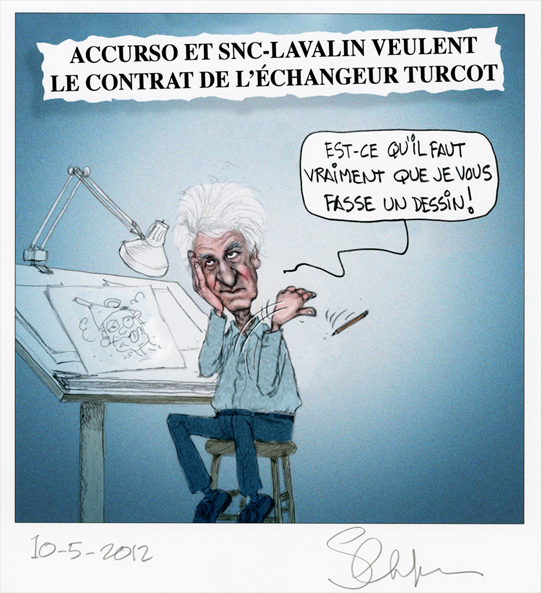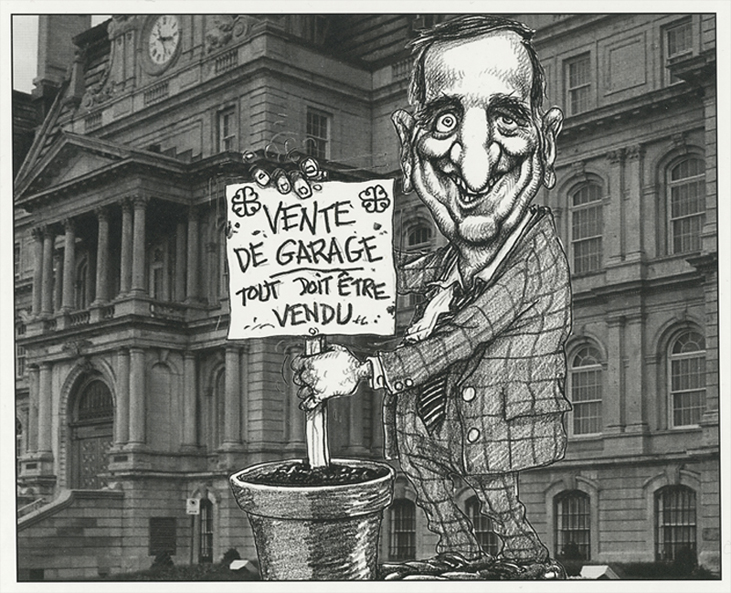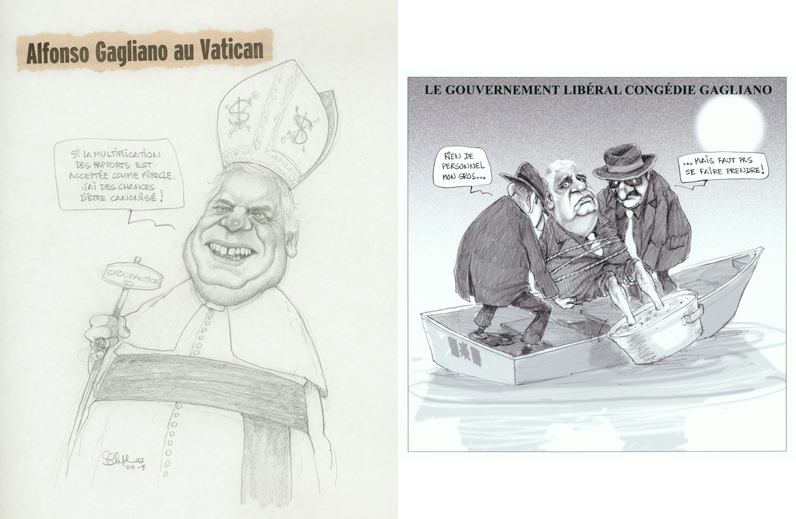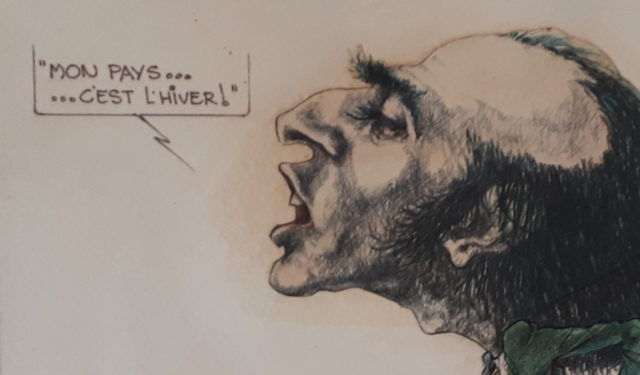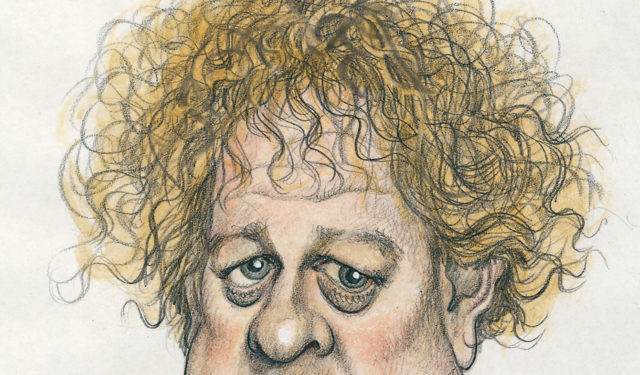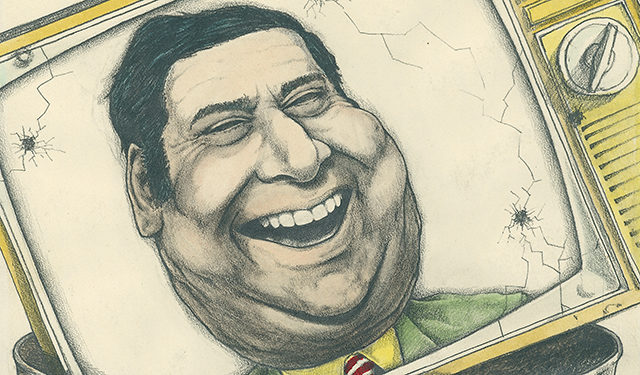From Pencil to Stylus
Learn about the role of digital technologies in producing and preserving Chapleau's work.
May 13, 2020
The Serge Chapleau Fonds reveals the evolution of an artist’s technique and clearly identifies the issues involved in preserving his work. Created over a 50-year period by a single person, it is an exceptional collection of cartoons.
You missed the first part of this series?
Here is the link to The Chapleau Fonds, as seen by a conservator
In the past few decades, major technological changes have taken place in all fields. The rise of digital technology has had a tremendous influence everywhere, notably in transforming artistic output and commercial reproduction techniques. Serge Chapleau’s artistic practice reflects these changes.
Drawings produced between 1969 and 2008 and created primarily with traditional materials like lead pencil, India ink and dye-based inks represent approximately 43% of the Chapleau fonds. Another 56% or so of the drawings were finalized using digital tools like a stylus and graphics tablet.
Chapleau began scanning his drawings in 1994 to use these files to create his finished pieces. He would print some elements of his cartoons on a laser printer, like in a collage. In 2002, he began printing his final drawings on a colour inkjet printer, a practice that continues to this day.
The fonds contains so many examples of Chapleau’s work that we can gather relevant information about its preservation, the history of previous conservation treatments, and work that may be required in the future. Compared to other cartoons in the Museum’s collection, Chapleau’s are in better condition because of the materials used and the care the artist has taken with the originals.
While other cartoonists have made extensive use of sometimes problematic techniques and materials, such as self-adhesive films, dye-based markers and various mixed techniques that are not truly compatible, Chapleau has always been quite a purist in his choice of materials.
That being said, some of the materials in his older work—like dye-based inks—are not lightfast and could pose conservation problems in the future. The toners used in laser printers sometimes contain iron oxides, compounds that can degrade both materials and paper. However, we know that Chapleau has opted for pigment-based inks and very high quality paper in his inkjet prints, ensuring that these cartoons will last for a very long time.
Computer-generated documents require much fewer conservation treatments because they do not employ unstable materials like glue and tape. The collage technique all but disappeared around the year 2004, with the arrival of the computerized art of cut and paste.
Stay tuned! In my next article, I will look at the main conservation treatments the Chapleau fonds requires.

